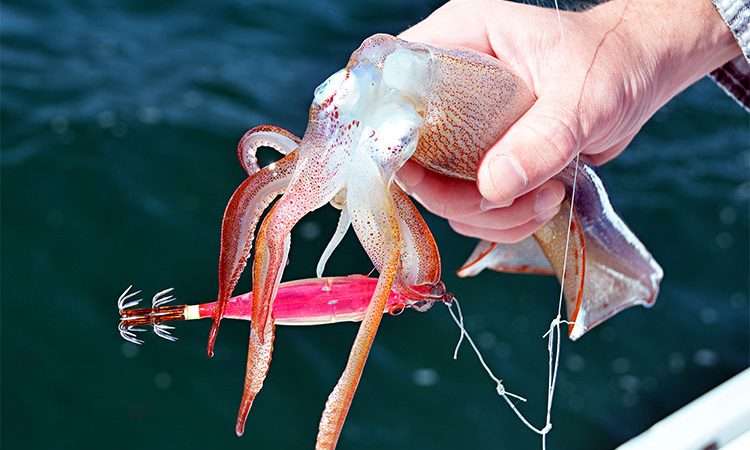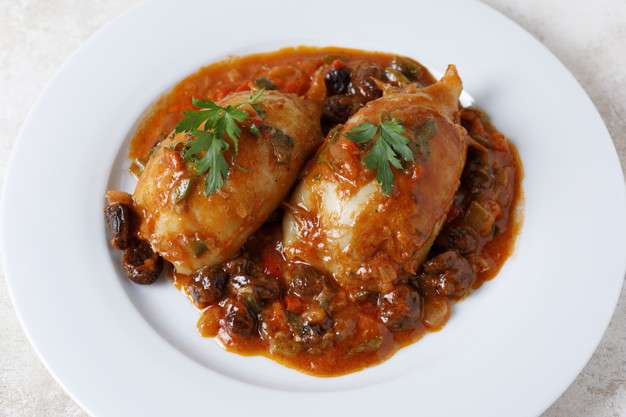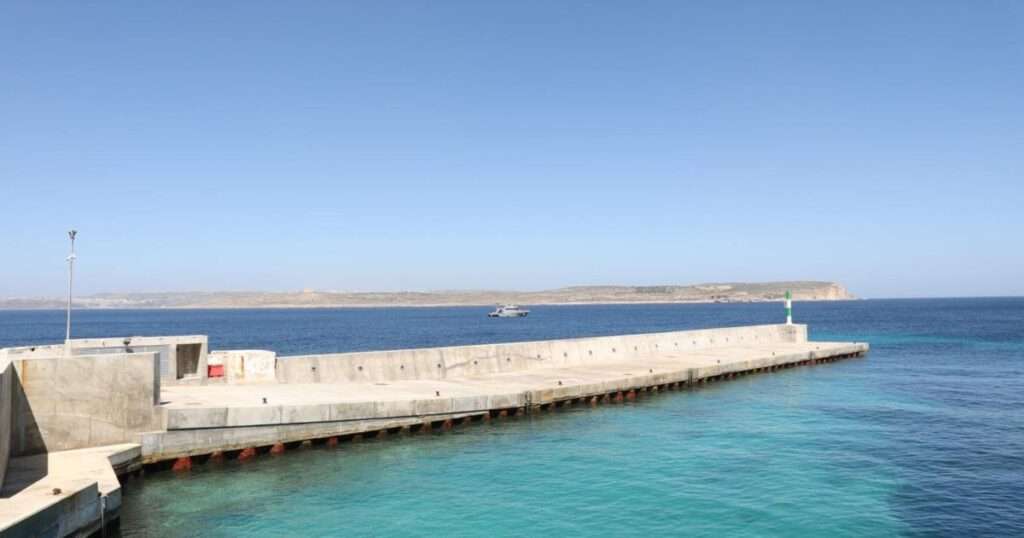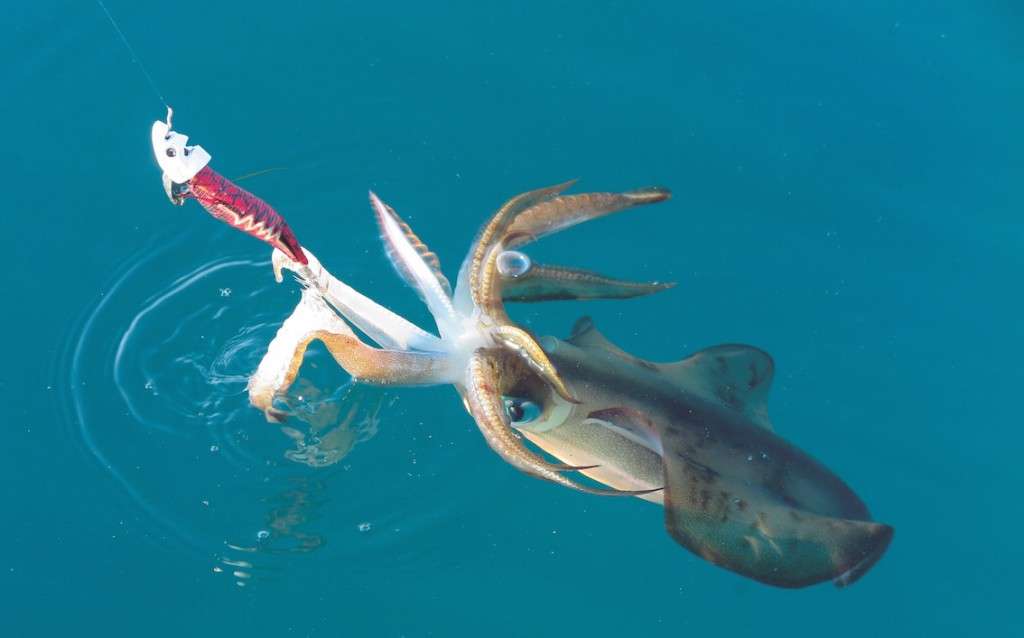Table of Contents
ToggleCalamari in Malta
Best Season, Fishing Secrets, and Traditional Maltese Stuffed Calamari Recipe
Malta’s crystal-clear waters are home to a wide variety of marine life, but few species excite local fishermen and food lovers as much as calamari, locally known as klamari. As the warm summer months fade and the sea begins to cool, September marks the start of the much-anticipated calamari season. From coastal rocks in Marfa to deep channels between Comino and Ħaż-Żebbuġ, Maltese waters come alive with the flicker of fishing lights and the rhythmic splash of jigs being cast into the night.
Why Calamari Season Peaks After September
Calamari fishing in Malta begins as seawater temperatures start to drop in late September, when squid migrate closer to the islands to feed and breed. The cooler temperatures and longer nights create ideal conditions for them to move towards shallower areas, making them more accessible to both shore and boat anglers.
During summer, squid tend to stay deeper, away from the light and heat. But once autumn arrives, they follow shoals of smaller fish closer to the coast. This is why many locals say, “Klamari jibdew wara San Girgor”—meaning calamari season truly begins after the feast of St. Gregory in early autumn.
The best months for calamari fishing are October through February, when the water is at its clearest and the squid are at their most active. Not only are they more abundant during this period, but their flesh is also firmer and sweeter, making them perfect for traditional Maltese recipes.

How Maltese Fishermen Catch Calamari
Catching calamari is both an art and a science. Most fishermen use a technique known as “squid jigging.” Instead of bait, they use brightly colored jigs—lures equipped with sharp, crown-like hooks designed to snag the squid’s tentacles.
Fishing typically starts just after sunset and continues deep into the night. The most successful catches often happen when the sea is calm and the moonlight is dim, as squid are more likely to be attracted to artificial lights in darker conditions.
Boat fishermen drift slowly or anchor over promising areas, while shore anglers cast from rocky outcrops or piers, gently jerking the rod to mimic the movement of prey. Patience is key—many locals claim the best results come from moving the jig slowly and rhythmically rather than aggressively.
The Magic of Underwater Lights
One of the most fascinating aspects of calamari fishing in Malta is the use of underwater lights. Fishermen place bright LED lamps beneath the surface to create a glowing pool of light that draws in plankton and small fish. These, in turn, attract hungry squid looking for an easy meal.
Squid are naturally curious and sensitive to light, so the glow acts as a beacon in the dark sea. Different fishermen swear by different light colors—some prefer white, while others argue that green or blue hues work better in certain water conditions.
The sight of glowing lights across the Maltese coastline during autumn nights has become a familiar and enchanting part of local maritime culture, a signal to everyone that klamari season is in full swing.

From Sea to Table: Cooking Calamari in Malta
Once caught, calamari can be enjoyed in countless ways—grilled, fried, stewed, or stuffed. The freshest catches are often grilled whole, brushed with olive oil, garlic, and lemon. Others are sliced into rings and fried to crispy perfection.
However, few dishes capture the soul of Maltese coastal cuisine as perfectly as Stuffed Calamari—a comforting, homely recipe that’s been passed down through generations.
Traditional Maltese Stuffed Calamari Recipe (Klamari Mimlija)
Ingredients:
4 medium calamari, cleaned (reserve the tentacles)
1 small onion, finely chopped
2 cloves garlic, minced
2 tablespoons olive oil
2 tablespoons tomato paste
1 fresh tomato, diced
2 tablespoons chopped parsley
2 tablespoons capers (optional)
6 chopped olives
3 tablespoons breadcrumbs
Salt and pepper to taste
1 glass white wine
½ cup tomato sauce
Instructions:
Prepare the calamari:
Clean the calamari carefully, removing the internal cartilage and ink sac, but keeping the body tubes intact. Chop the tentacles into small pieces.Make the filling:
In a pan, sauté the onion and garlic in olive oil until soft. Add the chopped tentacles, tomato paste, and diced tomato. Cook for a few minutes, then stir in breadcrumbs, parsley, olives, and capers. Season with salt and pepper. Allow to cool slightly.Stuff and secure:
Fill each calamari tube with the mixture, leaving a little space at the top to prevent bursting. Seal with a toothpick.Cook the stuffed calamari:
In a large skillet, add a little olive oil and brown the stuffed calamari lightly on each side. Pour in white wine and tomato sauce, then simmer gently for about 25–30 minutes until tender.Serve:
Serve hot with crusty Maltese bread or rice, garnished with fresh parsley and a drizzle of olive oil.
The result is a dish that’s tender, rich, and bursting with Mediterranean flavor—a true taste of Malta’s maritime heritage.

Best Locations to Catch Calamari in Malta
For those who prefer to fish from land, Marfa in the north of Malta, next to Bluewaves Watersports. It is one of the most popular and productive spots. The area’s deep, clear waters and rocky seabed create the perfect habitat for squid, especially during the cooler months. Other good shore spots include Ċirkewwa, Sliema breakwater, and Marsaskala’s rocky coastlines.
For boat fishermen, the channel between Comino and Aħrax in Mellieħa is legendary. This area offers deeper waters with strong tidal movement, attracting larger calamari schools. Many anglers anchor in the early evening and use underwater lights to draw squid close to the surface.

Calamari fishing is more than just a pastime—it’s a ritual that unites generations of Maltese families. Whether enjoyed as a weekend activity or a source of livelihood, the thrill of the catch and the joy of sharing a meal afterward are deeply rooted in the island’s culture.
From the glowing lights that dance across the sea to the rich aroma of klamari mimlija simmering on the stove, calamari season in Malta embodies everything that makes island life so unique—community, tradition, and a deep respect for the sea.



